To wrap up this week of fecal matters, I want to talk briefly about Bret Betnar’s “Shitscape: Mumbai’s Landscape In-Between”, a brilliant project done while Betnar was at the University of Pennsylvania.
“Shitscape” describes “the making of an entirely functioning landscape built from human excreta”. It proposes to accomplish this by recovering “the ‘soil’ from the settlements while extracting the beneficial flora from the forest and, in turn, utilize both as a generator for a new and evolving landscape”. The project aims to give “those living in peri-urban” Mumbai the capacity to relieve their own “conditions of poverty” by providing a structure within which “they participate in the creation, processing and profits of this landscape”1.
The site for the project is the Appapada Quarry, which sits between “the northern Mumbai suburb of Malad East” and “a hillside of informal settlements”. “In the middle of the quarry is the large Appapada Maidan, used by kids and adults from varying parts of northern Mumbai. Several areas in and around the quarry environs are used for toileting by the local populace”.
Betnar’s methodology for doing this is both infrastructural and generative:
“‘Shitscape’ proposes three major introductory insertions: constructed trench-like composting toilets, a stone pathway traversing quarry wall and stone ‘tanks’ for the retention of water. Other minor insertions should include a slow-sand filter for availability of potable water, a grove of both coconuts and bananas to help begin the functioning of the landscape and pit toilets for use during the monsoon season.”
By infrastructural, I mean that it seeks to construct a framework which can be inserted into the landscape and used to trigger generative effects within that landscape; by generative, I refer to the tendency of landscape to multiply, transform, and alter the inputs it receives. The construction of toilets, a pathway, a filter, and retention tanks does not directly produce a new fertile terrain. (One way, for instance, that a new fertile terrain could be directly produced would be by importing a carefully specified topsoil, as in the average landscape capital project. This is exactly what Betnar does not propose.) Rather, those infrastructures transform an input — feces — into a substance — compost — that can be applied to the landscape over time, introducing a new process to the set of processes already operating on that landscape, and creating what Betnar calls the shitscape.
Laudably, a significant portion of the Betnar’s study is devoted to considering both the potential progression of the landscape through time and its capacity to serve as a prototype for similar future landscapes:
“With water, improved soil, food supplies and the resiliency of the local population, this landscape can evolve throughout time to accommodate more varieties of produce and the potentially profitable growing of timber and Ayurvedic plant material. Additions to the water and toilet systems can be made as required by the local community. If this landscape is to be a success, it will need not only the inputs from the community, but their ingenuity in adapting the plan to their own uses. As such, it is hoped that this landscape could be maintained through multi-family networks, much like a village system. This project is designed as a prototype scenario which, if successful, could be repeated elsewhere along the western edge of the park.”
This describes one of the significant advantages of working infrastructurally and utilizing the generative capacity of landscape: because those methodologies offer opportunities to transform seemingly useless inputs into valuable material outputs, they are particularly valuable to people who lack the capacity to take advantage of more capital-intensive modes of landscape transformation.
You can read more about Betnar’s project, and see a few additional images, at the site for the 2010 ASLA Student Awards.

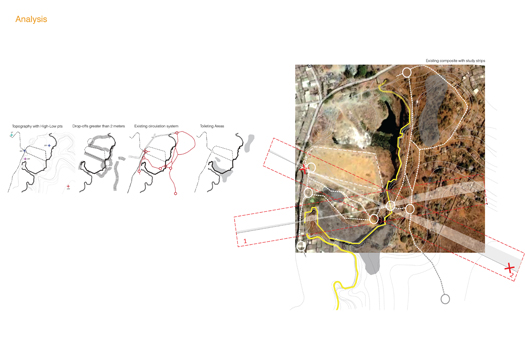
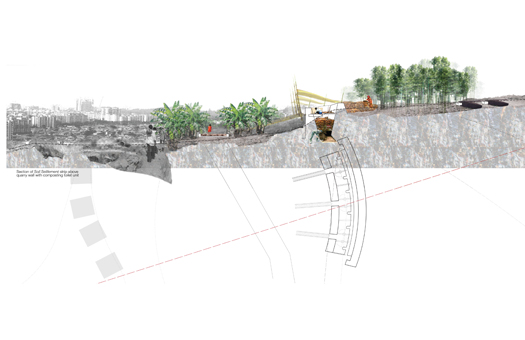
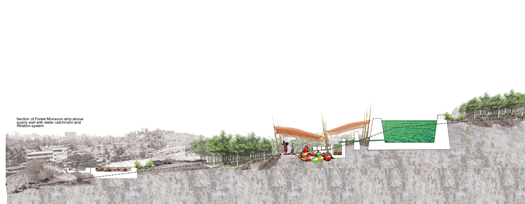
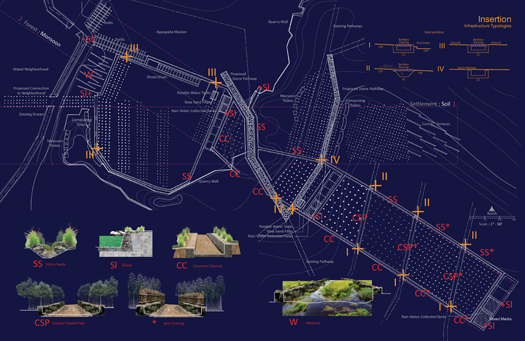


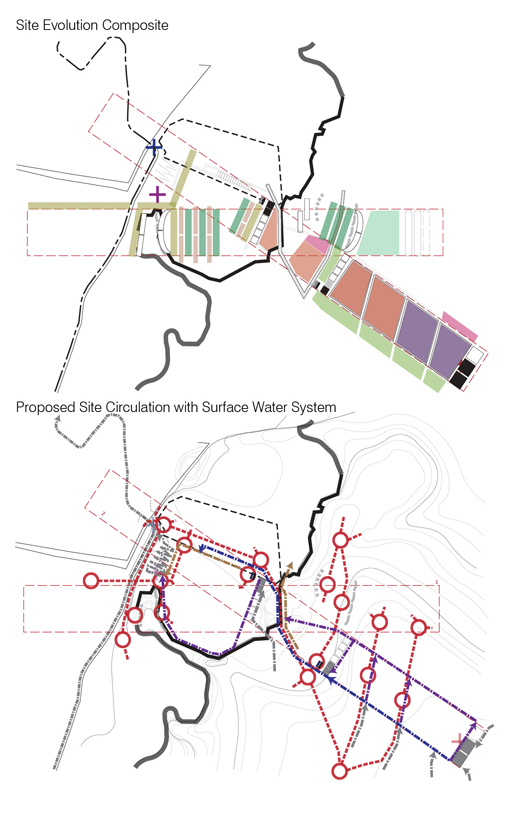
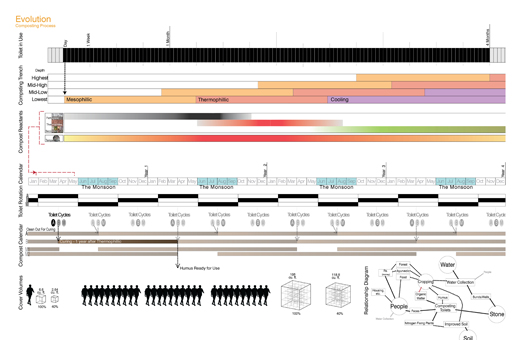

[…] shitscape"“Shitscape” describes “the making of an entirely functioning landscape built from human excreta”. It proposes to accomplish this by recovering “the ‘soil’ from the settlements while extracting the beneficial flora from the forest and, in turn, utilize both as a generator for a new and evolving landscape”."(tags:eco cities ) […]
[…] unos días en mammoth publicaban la reseña del trabajo ganador de los premios para estudiantes de la Asociación […]